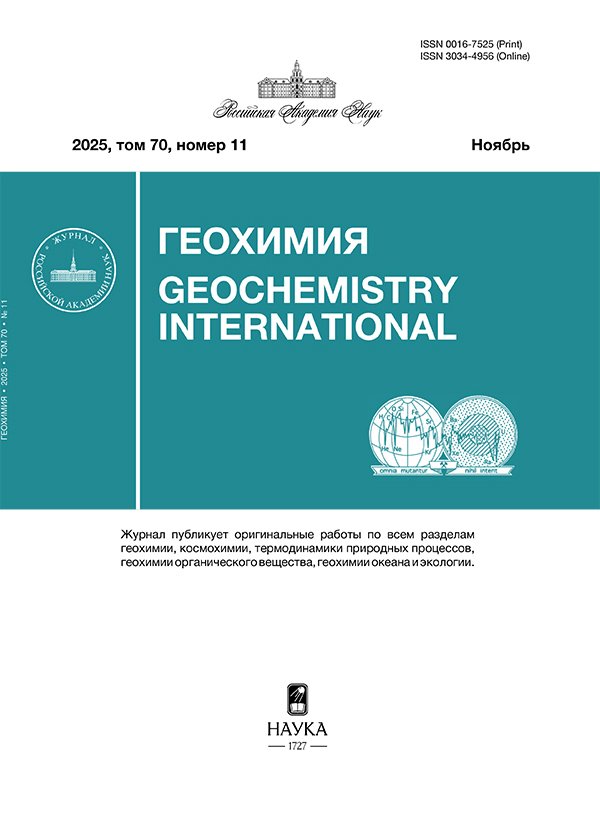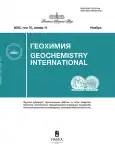Геохимия
ISSN (print): 0016-7525
Журнал «Геохимия» освещает проблемы космохимии; геохимии магматических, метаморфических, гидротермальных и осадочных процессов; органической геохимии; прикладной геохимии и химии окружающей среды.
Свидетельство о регистрации СМИ: № ФС 77 – 83947 от 30.09.2022
Журнал дает своим читателям возможность расширить представление о геологии территории континента Евразия.
Учредители
- Российская академия наук
- Институт геохимии и аналитической химии им. В.И. Вернадского РАН
Главный редактор
- Костицын Юрий Александрович, академик РАН, доктор геолого-минералогических наук
Периодичность / доступ
12 выпусков в год / подписка
Входит в
Белый список (2 уровень), перечень ВАК, РИНЦ
Журнал основан в 1956 году .
Текущий выпуск
Том 70, № 11 (2025)
Статьи
Геохимические и изотопные (Sr, Nd, Pb, O) типы источников меловых магм Удинского сектора Западно-Забайкальской рифтовой области
Аннотация
 877-902
877-902


Поглощение растворенного фтора карбонатными минералами из морской воды
Аннотация
 903-907
903-907


Гидрохимические и литохимические особенности горных озер в районах распространения рудоносных осадочно-вулканогенных пород (на примере Каракольских озер, Горный Алтай)
Аннотация
 908-927
908-927


Влияние продуктов коррозии на сорбцию и распределение актнидов на минералах трещиноватых пород участка «Енисейский» Нижнеканского массива (Красноярский край)
Аннотация
 928-940
928-940












